
Mary B
There are an estimated 136,000 people living on conditions of modern slavery in the United Kingdom (GSI 2018). According to the 2017 annual figures provided by the National Crime Agency, 5, 145 potential victims of modern slavery were referred through the National Referral Mechanism in 2017, of whom 2,454 were female, 2688 were male and 3 were transgender, with 41% of all referrals being children at the time of exploitation. People are subjected to slavery in the UK in the form of domestic servitude, labour exploitation, organ harvesting and sexual exploitation, with the largest number of potential victims originating from Albania, China, Vietnam and Nigeria. This data however does not consider the unknown numbers of victims that are not reported. “Mary” came to the UK with an overseas domestic worker visa. Her passport was taken by her employer. She escaped after 12 weeks. By the time she entered the National Referral Mechanism (NRM)—the UK’s framework for identifying and referring potential victims of modern slavery and ensuring they receive the appropriate support—her visa had expired and she did not have the right to work. Domestic servitude accounted for 7% of the reported exploitation type of potential victims referred to the NRM in 2018, and 9% of the total potential victims indicated by contacts to the Modern Slavery Helpline in 2018. The narrative is from her oral evidence to the Home Affairs Committee’s Modern Slavery Inquiry on November 6, 2018, in a private closed-door session with three MPs. Her name has been changed and identifying details have been redacted, including her home country, the year she came to the UK, and the name of a charity.

Uday
The Global Slavery Index 2018 estimates that on any given day there were nearly 8 million people living in modern slavery in India. While the bonded labour system is formally abolished and criminalised, recent research indicated that bonded labour is still prevalent in India. A 2016 report found that in the state of Tamil Nadu, 351 of 743 spinning mills used bonded labour schemes, otherwise known as Sumangali schemes. Similarly in granite quarries, wage advances and loans with an interest ranging from 24% to 36% are used to bond workers. Situations of debt bondage are often aggravated by the need to raise emergency funds or take on loans for health crises. Uday became a bonded labourer after taking up his father’s loan. Uday tells of the process of borrowing money from a landlord and of the caste dynamics between landlord and bonded labourer.

Ram
The Global Slavery Index 2018 estimates that on any given day there were nearly 8 million people living in modern slavery in India. While the bonded labour system is formally abolished and criminalised, recent research indicated that bonded labour is still prevalent in India. A 2016 report found that in the state of Tamil Nadu, 351 of 743 spinning mills used bonded labour schemes, otherwise known as Sumangali schemes. Similarly in granite quarries, wage advances and loans with an interest ranging from 24% to 36% are used to bond workers. Situations of debt bondage are often aggravated by the need to raise emergency funds or take on loans for health crises. Ram became a bonded labourer after taking out a loan of 30,000 rupees. Ram speaks of the caste system and how landlords do not want to abolish bonded labour, despite them paying their labourers less and less and giving out smaller loans. Ram has been able to pay off most of his debt and now works as a daily wageworker to pay off the rest.

Atal
The Global Slavery Index 2018 estimates that on any given day there were nearly 8 million people living in modern slavery in India. While the bonded labour system is formally abolished and criminalised, recent research indicated that bonded labour is still prevalent in India. A 2016 report found that in the state of Tamil Nadu, 351 of 743 spinning mills used bonded labour schemes, otherwise known as Sumangali schemes. Similarly in granite quarries, wage advances and loans with an interest ranging from 24% to 36% are used to bond workers. Situations of debt bondage are often aggravated by the need to raise emergency funds or take on loans for health crises. Atal works as a bonded labourer in Uttar Pradesh. He tells of the difference between his and his father’s time, the restrictions placed on him due to his caste and how it is almost impossible to ever pay off borrowed debt. He also tells of how he once stood for election in his community in an attempt to obtain justice for bonded labourers.

Chittamma
It is estimated that almost 8 million people are living in conditions of modern slavery in India (GSI 2018). The skewed sex ratio in some regions of India has fuelled the trafficking and selling of women and young girls as brides within India. Women are reportedly sold off into marriage by their families, sometimes at a young age, and end up enduring severe abuse, rape and exploitation by their husbands. It is also reported that women and girls from impoverished backgrounds have been lured by promises of marriage by younger men from urban areas, then forced into sex work once married. Chittamma was forced to marry her cousin when she was 17 years old. Though Chittamma goes out for wage work, everything she earns is given to her husband and she does not have enough food to eat.
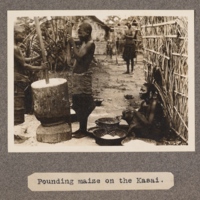
Pounding maize on the Kasai
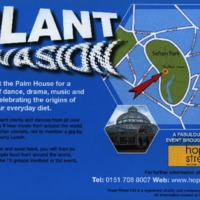
Plant Invasion
Plant Invasion was a family event of dance, drama, music and design, celebrating the diverse origins of food in everyday diets. The project looked at the origins of tea, and at the trade routes through Liverpool associated with sugar, coffee, tobacco, rice, cotton and enslaved peoples. The festival was organised by the Liverpool charity Hope Street Ltd, and took place at the Palm House in Liverpool's Sefton Park. Fifteen community groups prepared performances and displays based on their investigations into the journeys of non-indigenous plants and the routes they took in arriving in the UK.
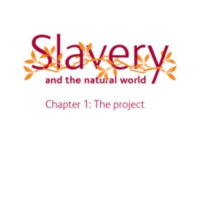
Slavery and the Natural World
In consultation with local community groups, in 2007 the Natural History Museum commissioned new research into its collections that link slavery and the natural world. The research uncovered experiences of enslaved people and the use of plants in their everyday life, as food, medicines and poisons. It also examined the complex relationships between enslaved people and naturalists exploring newly-colonised lands. The museum ran a series of public events, co-hosted by Race on the Agenda, which aimed to bring the historical, scientific and public viewpoints together. It created online educational resources on themes such as Commercial Plants, Everyday Life, Diet and Nutrition, and Resistance. The museum also developed cross-curricular ideas for school lessons in Science using the context of slavery, looking at foods across different cultures, for example.
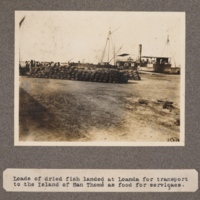
Loads of dried fish landed at Loanda for transport to the Island of San Tome as food for for the servicaes
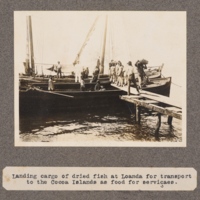
Landing cargo of dried fish at Loanda for transport to the Cocoa Islands as food for servicaes

Engage 2007
The Engage 2007 Festival of Culture celebrated cultural freedoms in South Gloucestershire. Led by South Gloucestershire Council, and in partnership with local volunteer groups, schools and community groups, the festival took place on 17 November 2007. It featured 40 live performances of drama, dance and music from India, China, Africa, South America and Europe, a world food zone, family workshops, youth and environmental activities and 60 interactive and information stalls. The Impact exhibition was produced as part of Engage 2007, exploring the part that people living in South Gloucestershire played slavery and abolition.